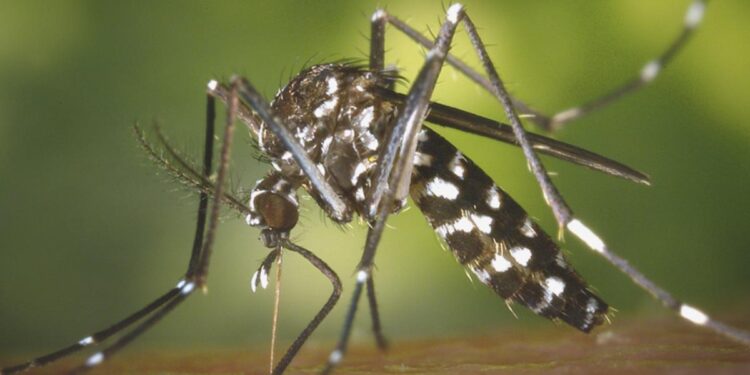As Southern China grapples with a rising outbreak of chikungunya, a mosquito-borne virus known for causing debilitating fever and joint pain, public health officials are on high alert. Initially discovered in the 1950s, chikungunya has been making a resurgence in recent years, with its spread posing significant challenges in tropical and subtropical regions. With more cases reported daily, understanding the virus, its transmission dynamics, and preventive measures has become crucial for communities vulnerable to outbreak. In this article, we delve into the essential information surrounding chikungunya, its symptoms, and the implications of controlling this infectious disease in the context of Southern China’s current situation.
Understanding the Chikungunya Virus and Its Symptoms in Southern China
The chikungunya virus has gained attention during the recent outbreak in Southern China, primarily transmitted by the Aedes mosquitoes. This virus can lead to a range of symptoms that significantly affect an individual’s well-being. Commonly reported symptoms include:
- Fever: A sudden onset high fever often accompanies the onset of the illness.
- Joint Pain: Severe arthralgia, particularly in the wrists and ankles, can persist for weeks or even months.
- Muscle Pain: Generalized muscle aches contribute to the discomfort experienced during the infection.
- Headache: Many patients report debilitating headaches.
- Rash: Skin rashes may develop, particularly in the later stages of the illness.
Health authorities are emphasizing the importance of early detection and symptom management to control the spread of the virus. Preventative measures are essential, especially since no specific antiviral treatment exists. Individuals are urged to take steps to avoid mosquito bites, including:
- Using insect repellent with DEET.
- Wearing long-sleeved clothing.
- Avoiding areas with stagnant water.
As the situation progresses, monitoring for symptoms and taking proactive steps for prevention remain crucial in safeguarding public health.
Preventive Measures to Combat Mosquito-Borne Illness During the Outbreak
To effectively mitigate the threats posed by the current outbreak, it is crucial for communities to adopt a range of preventive measures aimed at reducing mosquito populations and minimizing exposure to bites. Residents are encouraged to engage in proactive strategies, including:
- Eliminating standing water: Ensure that areas around homes-such as gutters, flower pots, and discarded tires-are free of stagnant water where mosquitoes breed.
- Using insect repellent: Apply EPA-registered repellents containing DEET, picaridin, or oil of lemon eucalyptus when outdoors.
- Wearing protective clothing: Don lightweight, long-sleeved shirts and pants to cover skin and reduce the risk of being bitten.
- Installing screens: Use window and door screens to prevent mosquitoes from entering living spaces.
- Staying indoors during peak hours: Limit outdoor activities at dawn and dusk when mosquitoes are most active.
Local health authorities are also implementing community-wide initiatives to curb the outbreak. Collaboration between residents and health officials can be fostered through:
- Public awareness campaigns: Distributing educational materials that inform the public on how to recognize symptoms and seek treatment for Chikungunya.
- Breeding site management: Coordinating regular efforts to inspect and treat public areas for standing water.
- Community clean-up events: Organizing community efforts to clean up potential breeding sites.
By taking these comprehensive steps, communities can not only protect themselves from Chikungunya but also contribute to the broader effort to control mosquito populations and reduce health risks associated with other mosquito-borne diseases.
Public Health Response and Resources for Affected Communities
As the chikungunya outbreak continues to spread in Southern China, public health officials are mobilizing resources to mitigate the impact on affected communities. Local health departments are working diligently to enhance surveillance and rapidly identify new cases to contain the virus. Communities are advised to take precautions to minimize mosquito breeding, particularly by eliminating standing water in yards and public areas. In addition to community outreach efforts, residents can access educational materials and free resources to better understand prevention measures.
Government health agencies are collaborating with international organizations to provide essential support to areas hit hardest by the outbreak. Initiatives include:
- Vector control programs focusing on mosquito population management
- Health education campaigns aimed at raising awareness about chikungunya symptoms and transmission
- Testing and diagnostic services to ensure timely treatment for those infected
Furthermore, emergency response teams are on standby to assist with healthcare provision and mitigation strategies. A key aspect of the public health response is addressing the broader impact on community well-being, with mental health resources being made available for those affected by the virus.
The Conclusion
As Southern China grapples with the rising threat of chikungunya amidst ongoing outbreaks of mosquito-borne viruses, understanding the nuances of transmission, prevention, and treatment becomes crucial for public health. Authorities are ramping up efforts to control mosquito populations and educate communities about protective measures. In light of these developments, it is vital for individuals to remain informed and vigilant. Staying updated on health guidelines and seeking medical advice when necessary can significantly mitigate risks associated with chikungunya. As the situation evolves, continuing to monitor the response from health officials and changes in epidemiological data will be essential. Awareness and proactive measures are key in combating the spread of this debilitating virus.














Italy to Deport Egyptian Imam After Controversial Comments at Pro-Palestine Rally